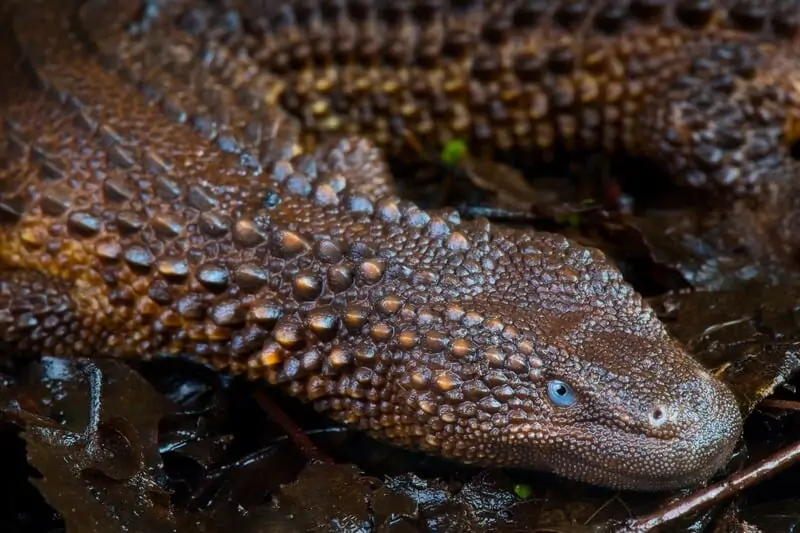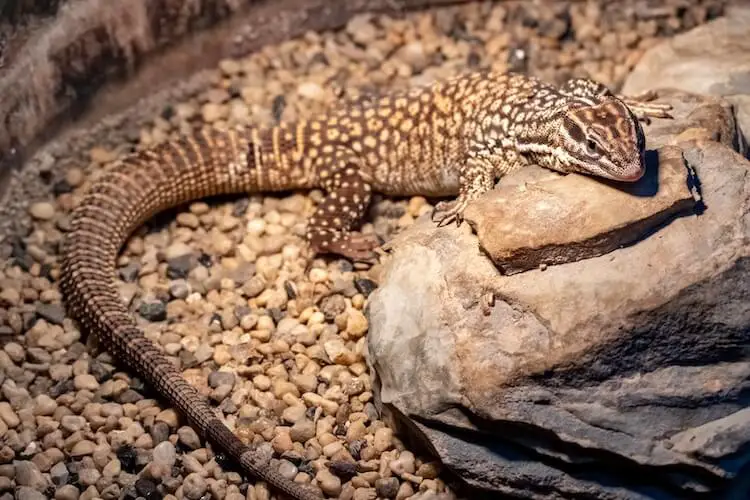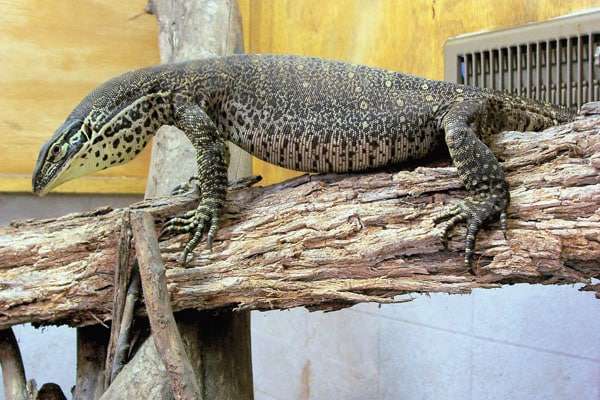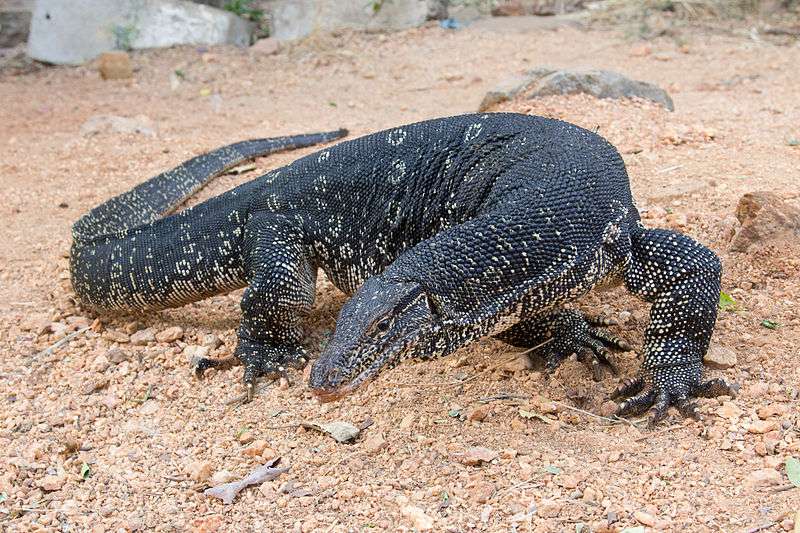
Description
Scientific name: Lanthanotus borneensis
Life span: up to 7- 10 years
The Earless monitor lizard has a long neck, cylindrical body, short limbs with sharp claws, and tiny eyes with semi transparent eyelids. They have 6 horizontal rows of scale with sharp keels. Regardless of their name, they can hear even if they don’t have an ear entrance, a tympanum, or any other exterior obvious indicators of ears. Its back is orange-brown in color while its underbelly is dark brown and white, rusty, and pale yellowish. Its prehensile tail does not regrow if it is lost. They are related to the actual monitor lizard family.
Native Region/Habitat
The Earless Monitor Lizard is native to the islands of Borneo and Brunei, West and North Kalimantan, and Sarawak. They can be found in wetlands and rainforests, palm oil plantations, fruit tree gardens, and sometimes in rice fields.

Behavior
The Earless Monitor Lizard spends the daytime in burrows close to water or beneath wood logs, gravel, or some plants. They move slowly and are inactive most of the time, yet when frightened, they may move astonishingly quickly. They communicate by generating soft squeaking vocalizations and occasionally swinging their neck and flicking their forked tongue out. They are solitary animals that hardly ever gather in groups. Earless Monitor Lizards are highly territorial and seek big areas with reliable food sources and lots of opportunities for breeding. They alternate between sunbathing and hunting for prey. The semi-transparent eyelids of these Monitor Lizard are closed while swimming, and it swims gracefully in the water. are excellent swimmers as well since they have a lengthy underwater breath-holding period. In captivity, they will eat squid, fish, mussels, frogs, chicken liver, eggs, and shrimp.
Care As a pet/In captivity
The Earless Monitor Lizard is semi aquatic. They lounge on land and in the water equally. In order to maintain one in captivity, you’ll need to design an environment that meets its requirements. The construction of a swimming area and a land area is essential to provide earless monitor lizards with the ideal captivity habitat. The majority of owners of earless monitor lizards choose custom-made cages. The enclosure temperature should be around 75-82 Fahrenheit.
Use a fine-grained substrate that the lizard can readily move about in with its claws. These animals enjoy digging in the ground and building impromptu dwellings. Reptile mixtures should work nicely. Anything with big fragments that can cause choking hazards should be avoided.
Table





